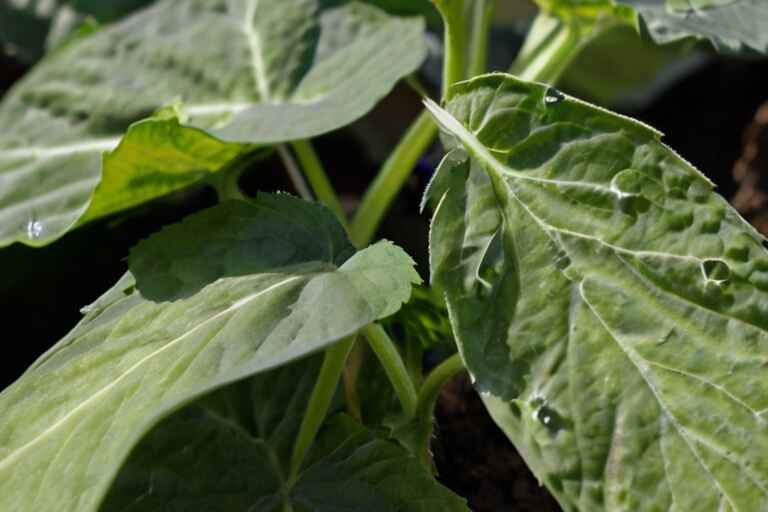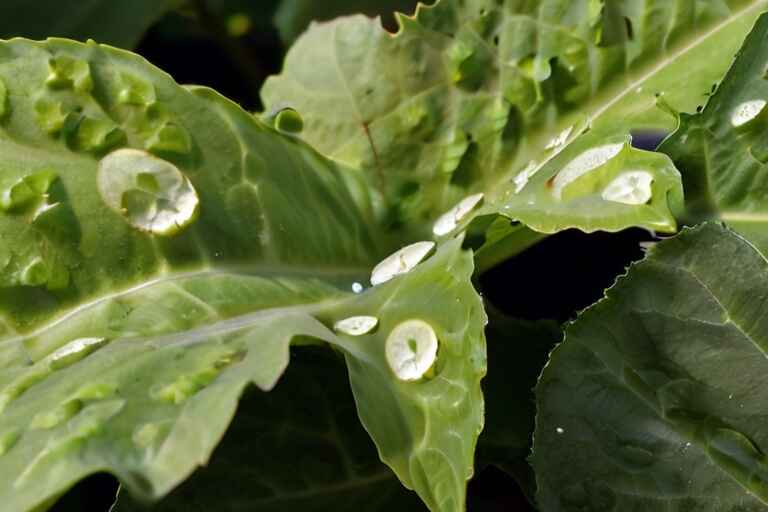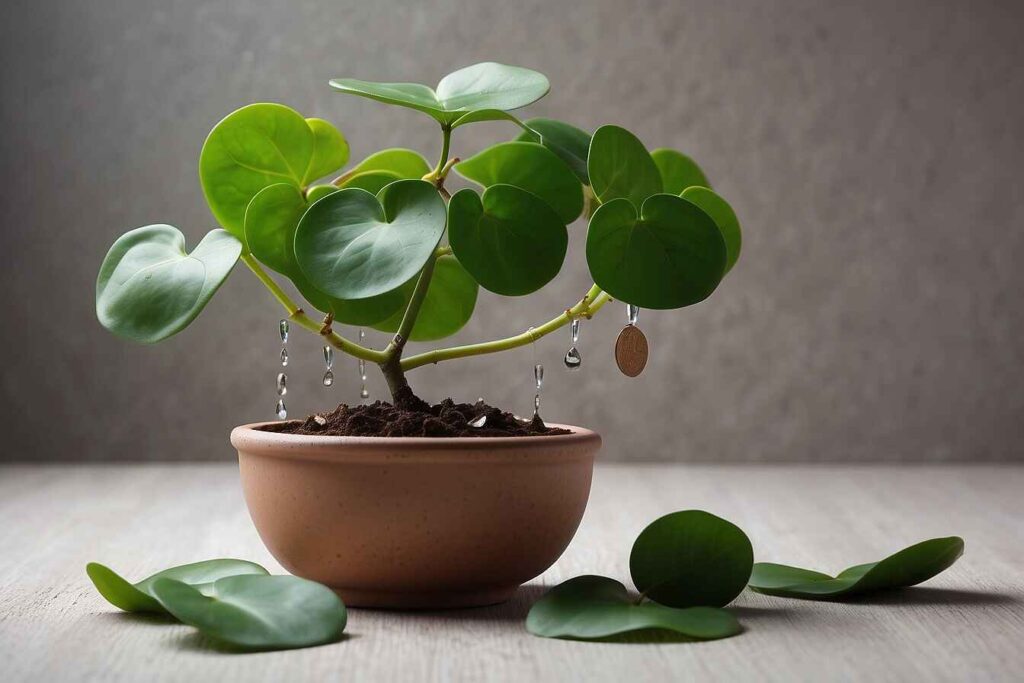Cucumbers are loved in gardens worldwide for their crunch and fresh flavor. Cucumbers are great for cooking and look good in home gardens. Despite being strong, cucumber plants face issues, like when their leaves turn white.
Garden biodiversity and gastronomic delight are two reasons why cucumbers are highly valued. Cucumbers offer many food choices, like fresh salads and tasty pickles. Gardeners like them for rich foliage and sprawling vines, adding beauty to gardens.
When you find white leaves on your cucumber plants, it might be a worry. These white marks on the leaves show problems that can harm the plants’ health and growth. We must understand why the cucumber plant leaves turning white appear on our cucumber plants to keep them healthy.
White leaves on cucumber plants are a sign of trouble, not just for looks but for the plant’s health too. These white leaves can cause problems in how the plant functions. If these issues are not fixed, the plants’ health and strength can be affected. This can result in slow growth, lower harvests, and in severe situations, plant death.
What is White Cucumber Leaves
Before we can fully explore the mysteries of cucumber plant leaves turning white, grasp the environmental conditions causing it first. Weather patterns and diet can affect how healthy and attractive cucumber leaves appear. White foliage on cucumber plants may result from various environmental factors. Changes in humidity and temperature are two of the most important of these. High humidity and heat can promote fungi-related illnesses like powdery mildew. It shows as white patches on leaves. Inconsistent watering and lack of sun may stress cucumber plants, causing discolored leaves.
Timely recognition of cucumber plant leaves turning white is crucial. It prevents plant health issues. Gardeners can check plants often to find problems early and act quickly. Gardeners can address symptoms like white leaves by adjusting care measures. This protects cucumber plants.
Common Diseases Affecting Cucumber Plants
Like any other living thing, cucumber plants can have a variety of diseases that can harm them and reduce their output. Two of the most common diseases are cucumber mosaic virus and powdery mildew, each of which has unique symptoms and effects on plant health.
Powdery Mildew
Powdery mildew is a major enemy of cucumber plants. It looks like a powdery white coating on the leaves, stems, and even fruits. This fungus grows well in warm, damp weather. It spreads a lot in spring and fall. Powdery mildew affects cucumber plants by damaging appearance and photosynthesis process. It hinders growth and energy production from sunlight.
Cucumber Mosaic Virus
Cucumber mosaic virus (CMV) is sneaky. It gets into cucumber plants through tiny holes made by bugs like aphids. Once inside the plant, CMV damages cell functions. This leads to issues like spotted leaves, twisted shapes, and slow growth. If left untreated, CMV can greatly reduce how many cucumbers a plant can produce. This makes the plants more prone to getting sick and affected by the environment.
Impact on Plant Health and Productivity
Powdery mildew and cucumber mosaic virus cause problems for cucumber plants. They make the plants less pretty and not as healthy or productive. These diseases harm the way plants make food, take in nutrients, and stay strong. Affected plants may show stunted growth and less fruit production. They may become vulnerable to secondary infections, threatening garden ecosystems.
Correctional Actions for Cucumber Plant Leaves Turning White
Swift action is vital when cucumber leaves turn white. Correct issues promptly. Restore plant vigor. Various remedies and preventive measures can combat plant issues effectively. Natural solutions are among the most promising options available.

Natural Solutions and Homemade Remedies
Natural solutions are good for gardeners, especially when dealing with cucumber plant leaves turning white. Neem oil comes from neem tree seeds. It helps fight fungal infections and viral diseases on cucumber plants. The neem oil has properties that fight plant diseases, helping them stay healthy. It protects plants from fungi and viruses, supporting their strength against infections.
Use neem oil. Baking soda sprays are cost-effective against white cucumber leaves. Create an alkaline environment by applying baking soda and water to foliage. It inhibits fungal growth and promotes leaf health. Adding carrier oil like horticultural or cottonseed oil boosts solution effectiveness. It improves coverage and adhesion to plant surfaces.
Stressing the need of preventive and early intervention
The idea of early intervention and preventive actions is essential to successful repair. Gardeners can detect and treat discomfort early to prevent serious issues later. Minor problems can escalate if not addressed promptly by gardeners. A good plant care method involves checking your plants regularly. Use natural remedies, give them enough sunlight, and water them properly.
Preventive measures include integrated pest management to protect from white cucumber leaves. Soil health promotion is proactive in preventing plant diseases. Gardeners can make the garden’s ecosystem strong and balanced. This helps prevent diseases and keeps cucumber plants healthy.
Gardeners can fix white cucumber leaves by following these steps early on. They can also grow healthier garden environments by doing so. Nurture healthy cucumber plants with vigilance, knowledge, and proactive care. Enjoy abundant harvests.
Watering Issues
Watering is vital for cucumber plants, affecting their health significantly. In this part, we explore why watering cucumbers right is crucial. We explain how too much or too little water can make leaves change color.
The Importance of Proper Watering Techniques
Proper watering techniques lie at the heart of nurturing healthy cucumber plants. Proper watering is crucial for healthy cucumber plants. It helps them absorb nutrients, grow well, and function effectively. Gardeners follow watering guidelines to reduce water stress and foster plant growth.
Risks of Overwatering
Plants need water to grow, but too much can damage cucumber plants. When the soil holds too much water, it’s called overwatering. This can harm plants by causing various health problems. Flooding for a long time suffocates plant roots. This stops them from taking in oxygen and promotes root diseases. Additionally, too much watering takes away important plant nutrients from the soil. This can cause nutrient deficiencies, which make leaves turn yellow and wilt.
Risks of Irregular Watering
An additional set of difficulties for cucumber plants arises from inconsistent watering methods. Plants that get uneven watering stress too much and become less able to cope with changes. Drought periods accompanied by cycles of heavy rain disrupt normal body functions. This leads to uneven growth and increased susceptibility to diseases. Leaf yellowing often happens when plants don’t get enough water regularly. It shows that the plants have moisture problems.
Related Discoloration of the Leaf
Leaf discoloration in cucumber plants, from yellow to white patches, shows water problems. Chlorosis is caused by nutrient deficiencies due to overwatering or irregular watering practices. It results in the loss of chlorophyll pigments, which give leaves their green color. Excessive soil moisture leads to favorable conditions for fungal pathogens. This causes diseases like powdery mildew, seen as white spots on cucumber leaves.
Getting Enough Sunlight
Cucumber plants require a sufficient amount of sunlight to grow and flourish at their best. This section discusses frequent problems with shading and sunscald damage, as well as the vital role sunlight plays in the health of cucumber plants.
Sunlight is the main energy source for cucumber plants. It helps in making sugars and promoting plant growth through photosynthesis. Adequate sunlight helps cucumber plants grow well by making photosynthesis strong. This leads to bigger leaves, longer stems, and fruits growing. Sunlight boosts plant hormones, enhancing vigor and resilience to stressors. It stimulates production.
Shade makes it hard for cucumber plants to get enough sunlight for photosynthesis. Trees, buildings, or thick leaves can block sunlight and slow plant growth. Plants get too little sun, so they grow weird and light, making less fruit.
Sunscald is a risk to cucumber plants from too much sun exposure, especially in hot weather. Sunscald shows up as pale patches on leaves, stems, and fruits due to sunlight. This happens as chlorophyll breaks down from sun exposure, causing cellular damage. Gardeners can protect plants with shade cloth or barriers to prevent sunscald damage. By watering in cooler parts of the day, you can reduce heat stress and prevent sunscald on your plants.
Managing Nutrient Deficiencies Leading to Cucumber Plant Leaves Turning White
Nutrient deficiencies can greatly affect the health and look of cucumber plants. This includes their leaf color. In this part, we look at common nutrient issues, focusing on zinc deficiency. We provide guidance on fixing these problems with soil improvements.
Common Nutrient Deficiencies
Nutrient deficiencies, such as those leading to cucumber plant leaves turning white, may show in different ways, often as clear leaf color changes. Zinc shortage is common in cucumber plants, causing yellowing between leaf veins. Zinc plays a crucial role in chlorophyll production and overall plant metabolism. Insufficient zinc levels hinder chloroplast growth. This leads to less chlorophyll and causes leaf color changes. Nutrient deficiencies like nitrogen, phosphorus, and potassium can cause leaf discoloration. They impair plant growth.
Effects on Leaf Coloration
Zinc deficiency shows up as interveinal chlorosis. The veins stay green, but the areas in between turn yellow or white. This unique yellowing pattern is a key sign of not having enough zinc in cucumber plants. As the plant lacks zinc, its leaves lose their green color and may not photosynthesize well. This weakens the plant’s growth.

Advice on Dealing with and Avoiding Deficiencies
Taking proactive measures is necessary to prevent nutrient deficiencies in soil. Adequate nutrient availability must be ensured. Soil testing is a valuable tool for assessing nutrient levels and identifying deficiencies. Gardeners can amend soil with targeted fertilizers. They correct imbalances and replenish nutrients. To treat not having enough zinc, use zinc sulfate or chelated zinc fertilizers. This can help with symptoms and bring back the normal color of leaves.
Practical Tips for Minimizing Transplant Shock
Minimize transplant shock. Plan and implement strategies to ease transition for cucumber plants. Here are some helpful tips to reduce transplant shock and help plants recover.
- Prepare the Transplant Site. Make sure the area where you will plant is ready. It should have good soil and get enough sunlight. Amend the soil with compost or organic matter. This improves soil quality and helps roots grow well.
- Be gentle when moving cucumber seedlings to avoid harming the roots. Handle cucumber seedlings carefully when transplanting. Loosen roots gently and avoid excessive handling to protect delicate roots.
- Shield newly transplanted cucumber plants from sunlight and bad weather. This helps reduce stress and keep moisture in the plants. Use temporary shading or row covers for new plants to adjust easily.
- Consider using root boosters to help roots grow better and recover faster.
- Monitor your transplanted cucumber plants often for signs of stress or wilting. Adjust watering as needed to help plants recover and stay healthy. Adjust when you water and take care of the plants to help them grow well and avoid problems.
Promoting Plant Recovery
Cucumber plants experiencing issues like leaves turning white can recover from transplant shock with care and attention. They will continue growing healthily. Keep roots moist, nourished, and protected during growth and regeneration phases. Gradually let plants get used to the sun after they adjust to their new home. Implement practical tips and create a nurturing environment for successful cucumber plant recovery. This ensures long-term success in the garden.
Dealing with Pests
The well-being and yield of cucumber plants can be seriously jeopardized by pests. This section covers finding pests like aphids, leafhoppers, and leaf miners. It also recommends ways to control and prevent them effectively using IPM techniques.
Common Pests
- Aphids can infest cucumber plants fast. This results in small growth, twisted leaves, and oddly shaped fruit.
- Leaf hoppers are small insects that look like wedges. They eat plant sap by poking holes in leaves. Leaf hoppers can cause leaves to die, dry out, turn yellow, and spread plant diseases.
- Leaf Miners are pests that dig tunnels in cucumber leaves and lay eggs underneath. This damages the leaves and can make them fall off early. Leaf miners harm plants by blocking sunlight, leading to plants losing leaves quickly.
Suggestions for Integrated Pest Control
Integrated pest management (IPM) offers a complete strategy for dealing with pests, including addressing issues like cucumber plant leaves turning white. It uses various methods to decrease pest numbers and their harm to the environment. The following IPM techniques can be used to control pests in cucumber plants:
- Cultural controls help prevent pests. These include crop rotation, cleaning up debris, and keeping gardens clean. By interfering with pest life cycles, these actions lessen the chance of infestations.
- Use beneficial insects like parasitic wasps, ladybugs, and lacewings to decrease pest numbers. Biological control agents help manage insect populations without using chemical pesticides. This keeps pests in check.
- To protect cucumber plants from pests, use bug nets or row coverings to create barriers. For minor pest problems, pick and squish bugs such as leafhoppers and aphids.
- As a last resort, use specific bug sprays if pests become too many for current methods. Use chemicals carefully and sparingly to protect the ecosystem and helpful bugs.
- Watch for signs of bugs on cucumber plants like weird leaves, sticky goo, or bugs moving around. Early detection allows for prompt action before pest numbers escalate out of control.
FAQS
Why are my cucumber plant leaves turning white, and how can I ensure the health of my Chinese money plant?
Cucumber plant leaves can become white for different reasons. This can include powdery mildew, lack of nutrients, or stress from the environment. Powdery mildew is a fungal disease that creates white powdery spots on the leaves. Timely help is vital to fix what’s wrong and make the cucumber plants healthy again.
To keep your Chinese money plant healthy, use well-draining soil and indirect sunlight. Remember to water it regularly. Don’t give the plant too much water because this could harm its roots. Make sure there’s enough air around the plant for good circulation. Regularly check the leaves for bugs or diseases. Address any problems quickly.


i think you really helpful info tell please can more elaborate this.
Pingback: Snake Plant Disadvantages | Revealing the Hidden Thorns